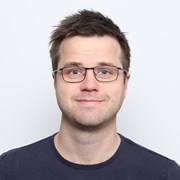Slug flow regimes will become more frequent in the NCS in the future as it is most commonly observed when flow rates decrease. Slug growth is also promoted by the current field developments involving long tie-ins, e.g. in the arctic regions. Properly controlling and handling slugs can reduce the need for gas flaring which reduces the environmental impact and the CO2 emissions.
The structural stability of the sub-sea components due to fatigue is a major concern for the oil companies. Operation under slug flow regime is considered as the worst case scenario from a structural and an operational point of view. Further, unforeseen long slugs can cause damage and flooding of separators. And finally, slug frequency has a direct impact on corrosion.
The existing slug flow models are weak because they are (a) largely based on experiments in short pipes, and (b) do not sufficiently consider realistic fluid chemistry e.g. the presence of surfactants and therefore significant gas buildup within the liquid slugs. This project will work towards reliable predictions of slug flow based on representative experiments
This is a KPN project financed by the Norwegian Research Council within Petromaks2, Total E&P Norge and Lundin AS. SINTEF Industry is the project owner and will work in close cooperation with NTNU and the international research partner HZDR (Germany). One PhD candidate will be educated as part of the project.

